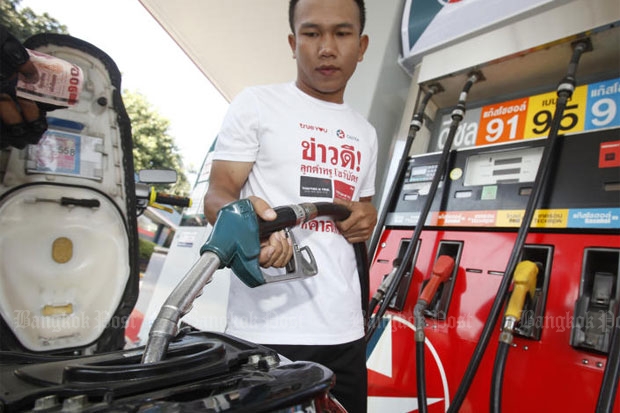
Gasohol 91 will be phased out of petrol stations nationwide by 2018, with gasohol 95 to follow suit in 2027, according to the National Oil Plan for 2015-35.
The Energy Business Department, which drafted the plan, said the country will be left with two high-percentage ethanol fuels, gasohol E20 and gasohol E85.
Once gasohol 91 and 95 are phased out, demand for biofuel is expected to triple to 25.4 million litres a day, said department director-general Witoon Kulcharoenwirat.
Energy policymakers will begin to gradually widen the gap in retail prices between gasohol 91/95 and E20 from the current two baht per litre.
"We have to use the price as a tool to encourage motorists to use greener fuels, but it's difficult to do so when pure petrol is so cheap," Mr Witoon said.
Because the gap between 91 and 95 is just 42 satang per litre at present, policymakers will have to gradually widen it using excise tax and levies for the state Oil Fund.
Gasohol 91 and gasohol 95 are E10-type fuels with a mix of 10% ethanol and benzene. E20 is 20% ethanol and E85 is 85%.
At a time of falling oil prices, when the price gap between mainstream petrol and biofuels is narrower, motorists prefer to fill their tanks with mainstream petrol.
All fuel types are currently subject to the Oil Fund levy except E20 and E85, as the fund is used as a tool to widen the gap between prices of high-percentage ethanol fuel and pure petrol.
According to Mr Witoon, all new passenger cars are compatible with E20, but if the price of E20 is not significantly lower than that of E10, motorists choose to run on the lower-percentage green fuel mixture.
The Energy Business Department expects consumption of gasohol 91 and gasohol 95 to remain at its low level of 7.8 million litres per day this year, on a par with 2015 levels.
Demand for E20 last year was 4 million litres per day, far lower than the forecast of 12.5 million litres. Consumption of E85 was 900,000 litres a day, falling short of the expected 1.4 million litres.
Thailand has about 2.5 million E20-compatible passenger cars. If every one of them used E20, they would require about 12.5 million litres per day, the department said.